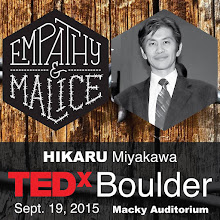Abstract vs Abstraction
During the time spent teaching at the Waldorf high school, I have introduced the exercises of abstraction and also the abstract expression.
It was Piet Mondrian, who had differentiated the abstract art from other art forms resulting from abstraction.
I could relate to such differentiation, for abstraction is due to making of something which exist as a tangible form into more simpler form without losing the main characteristics of such form. It is the process of "reduction," so to speak. Many of Picasso's works may fall into this category. In other words, the abstraction art depends on the existence of the concrete form.
Abstract art, on the other hand, does not rely on the existence of an actual, concrete form. For example, an idea and/or one's feeling, can be expressed with color(s) and form(s).
What would an idea of "courage" look like if one were to paint it without depending on the scene of some heroic being fighting his/her enemies? How would one express the feeling of sadness or anxiety purely in color(s)?
In a way, pure abstract art may come close to the essence of what the artist wants to express. It is, indeed, the Socratic exercise.
Ironically for Mondrian, his process of arriving at his now famous pure geometrical forms may have been originated in the reduction/abstraction of the existing forms, say, the trees, for example.
Monday, May 31, 2010
Subscribe to:
Post Comments (Atom)



What a fascinating narrative of the difference between abstract art and abstraction. Is the image above a result of your teaching this to Waldorf students? I would love to hear more about the creative process and how the children responded to these exercises. The work is gorgeous! Thank you for sharing! :)
ReplyDelete